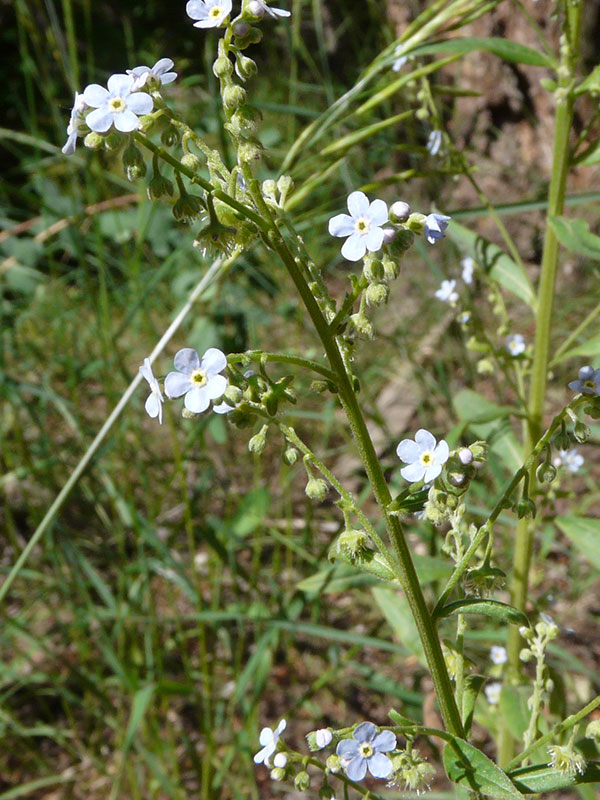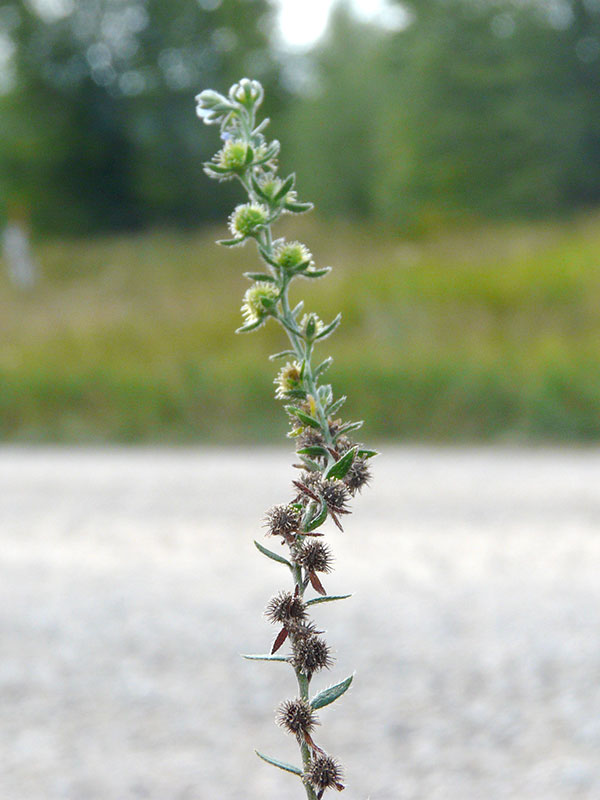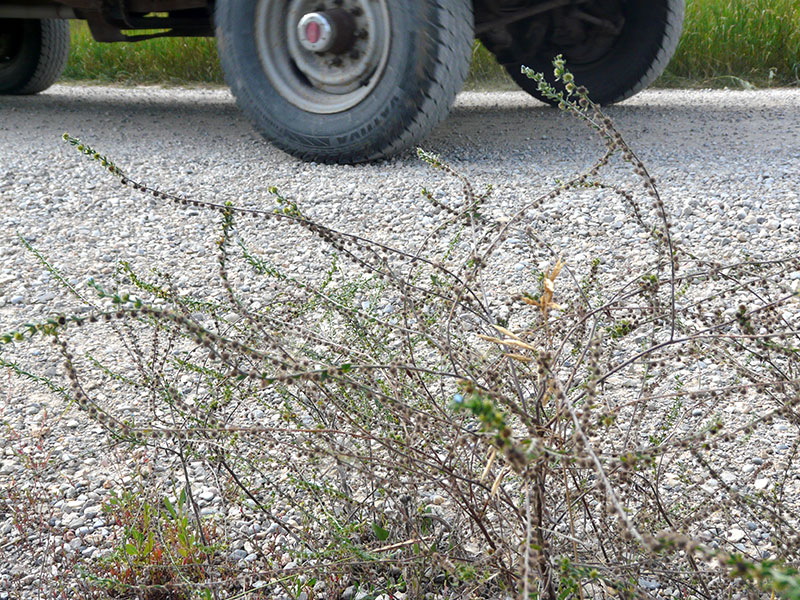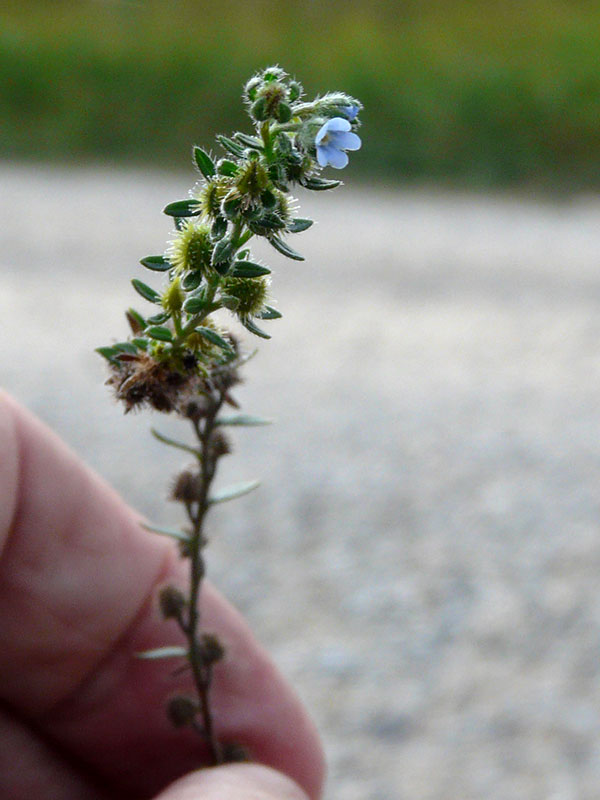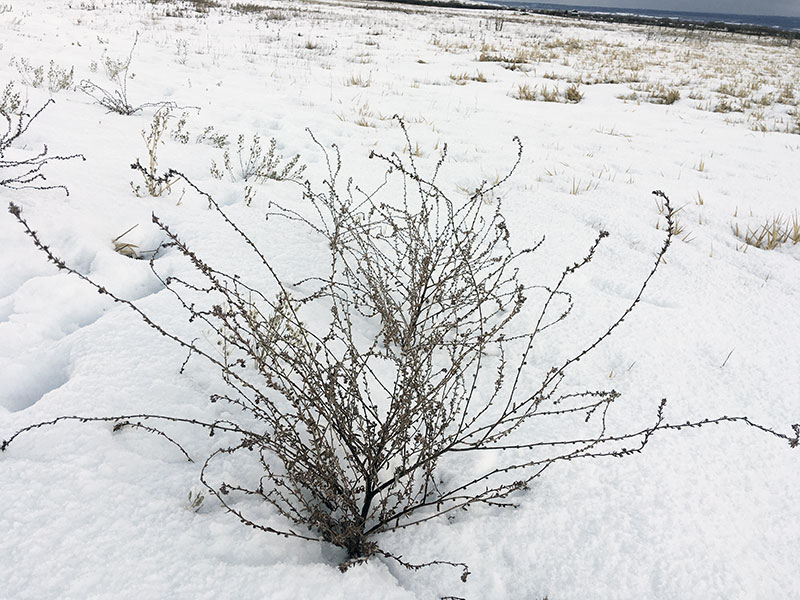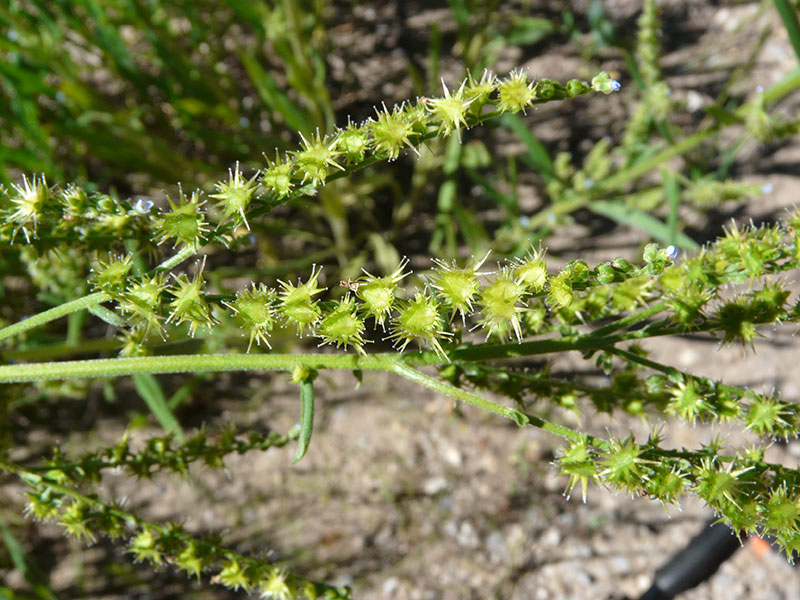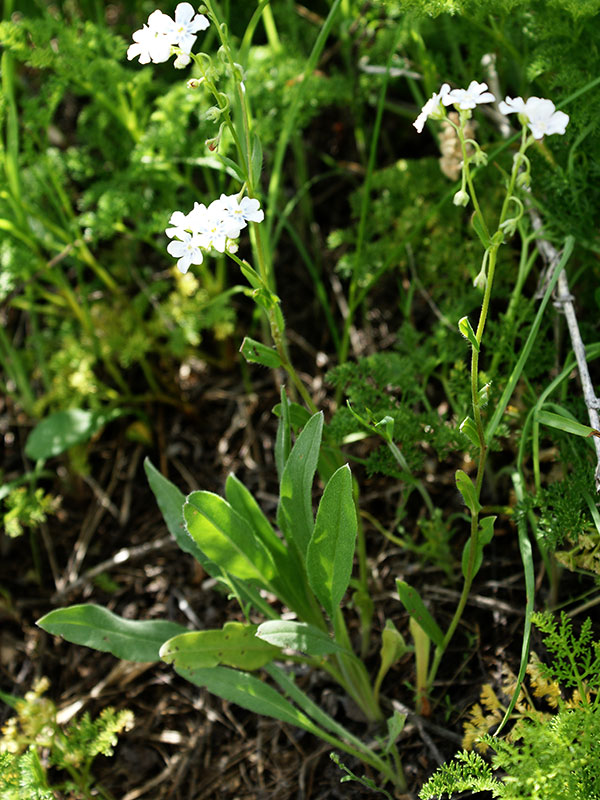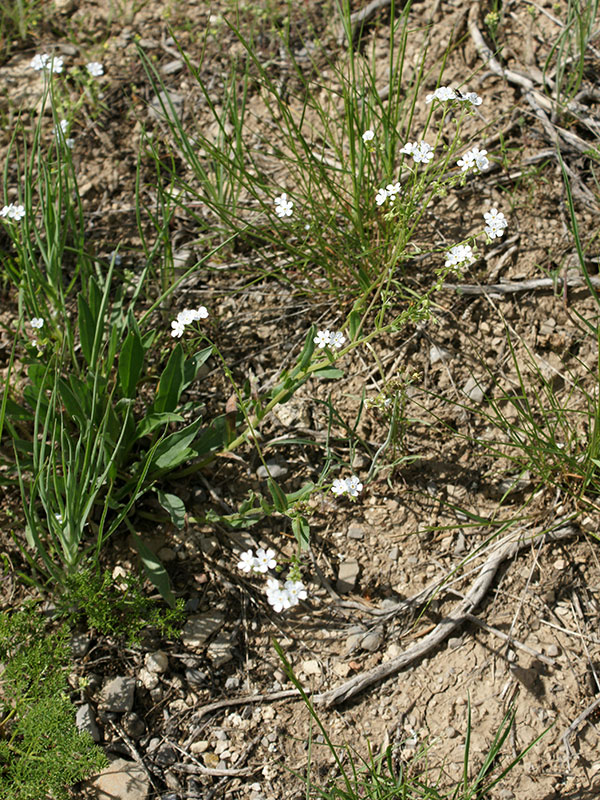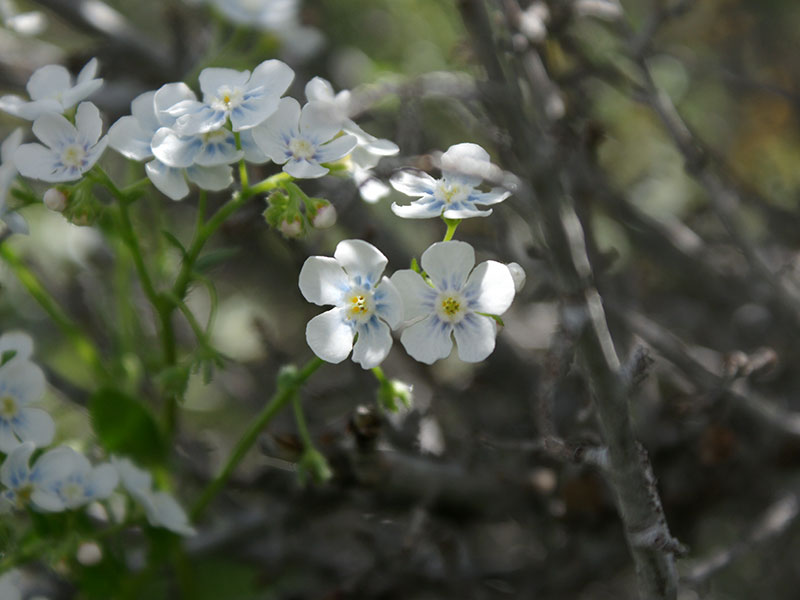Hackelia spp. / stickseeds in general
- very small blue flowers
- inflorescence elongates with single flower at top
- more and more branches through the season
- nasty stickseed fruits mature below apex
Also known as: beggar’s lice, sticktight, wild forget-me-not
There are at least three species of Hackelia in the area (IDFG lists 13 in Idaho) and all have really inconvenient, “nutlets” covered with prickles that make them stick to your clothes and your dogs. Two species, H. floribunda and H. micrantha, remind me of the fiber-optic lamps that were popular in the early 1970s… the inflorescence develops long branches, each tipped with a bright but extremely small blue flower. As the branches grow, new flowers form at the tips and the older ones simply mature into nasty fruits.
The fruits of the many-flowered stickseed (H. floribunda ) are tiny, flattened nutlets. They are quite prickly, although the prickles are very short. They are along one edge only, a feature distinguishing this species from H. micrantha. The prickles are also a feature distinguishing all the stickseeds from the forget-me-nots (Myosotis spp.).
One species, H. patens (spotted stickseed) actually has flowers that are large enough to see and they are pretty. The fruits are small nutlets with rows of small prickles on both edges.
The species that has the most obnoxious fruits/nutlets is H. micrantha. In that case the flowers are minute but the nutlets are relatively large and nastily armed. H. floribunda has flowers similar to H. micrantha, but fruit similar to H. patens. In that case, the plant is usually taller, the flowers are minute, and the prickles are only on one edge of the nutlet. Except for H. micrantha, you will need a hand lens to see these details.
As you look at blue borage family plants, you could confuse the hackelias with the forget-me-nots. The latter, however, lack prickles on the nutlets, e.g. Myosotis asiatica.
Not much eats Hackelia plants… mammals avoid them because of the bitterness of the leaves and the plants do nothing to attract birds. Apparently, some flea beetles will eat the leaves. Scientists also seem to avoid the plant – the scientific literature on Hackelia spp is distinctly lacking. If you are a botany graduate student looking for a project, the hackelias do seem like they would be a dead end… look for something with redeeming social importance.
Finally, despite my low opinion of the plants and their seeds, the two small-flowered species do have some interesting, if not redeeming, characteristics. For one thing, they are pretty well adapted to roadsides and the sides of heavily trafficked mountain paths. They can withstand snowplow and foot traffic. They don’t seem to mind being mowed. Basically, they are well adapted to highly and frequently disturbed environments where they play a role in returning human-generated “waste lands” back into vegetated ecosystems.
| Family | |
|---|---|
| Color | |
| Blossom size | |
| Inflorescence size | |
| When? | |
| Where? |
